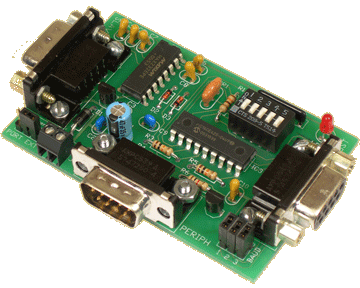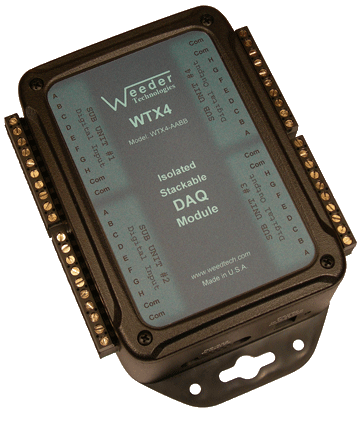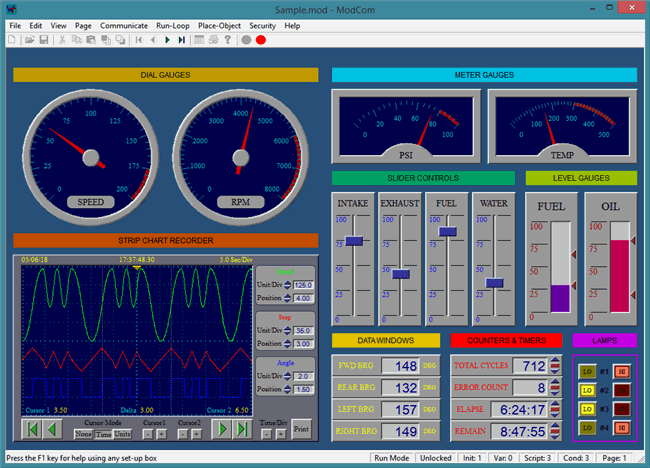 |
| ||||||||
  Weeder Technologies 90-A Beal Pkwy NW Ft Walton Beach FL 32548 850-863-5723 info@weedtech.com ESTABLISHED: 1989 DUNS: 969723154 CAGE CODE: 4T5L9 |
Isolated Stackable DAQ
|
 |
Multi-Drop Peripheral Interface Attach multiple RS232 devices (such as bar code scanners) to the same serial port of a PC. Up to 32 devices can share the same communications line without interference. read more... |
Multi-Drop Definition
Multi-drop is the term used when multiple communications devices share a single USB or RS232 communications port of a computer. There are many
Stackable Capability
Stackable refers to the ability to connect multiple units together and share a single communications port of a host PC, laptop, or Single Board Computer (SBC). The communications bus uses a stratagem based on the Carrier Sense Multiple Access (CSMA/CD) protocol. Carrier Sense (CS) is the monitoring of the data bus for a period of inactivity before a DAQ module is allowed to begin its own transmission. Multiple Access (MA) means that once the bus is free, every DAQ module in the network has an equal opportunity to transmit a frame. And Collision Detection (CD) uses non destructive bit wise arbitration to preserve the integrity of a data frame when two or more DAQ modules try to transmit at the exact same time. And since the data frame that wins arbitration remains intact during a collision, there is no additional communications delay when a collision occurs no matter how often it happens.
Host Communications
To communicate with a peripheral attached to a WTMPI-M module, commands are sent to the individual units by including a header character at the beginning (the address) so that it can be routed to the appropriate unit. If using multiple units connected together, the DIP switch for each unit should be set to a different position so that it will be assigned a different header character. When a command is sent to a peripheral, this header character is automatically striped off before passing the rest of the data on to it. When the peripheral sends data back to the computer, the WTMPI-M appends this header character to the beginning of the data stream so that the computer can identify its origin. All data from a peripheral is converted to the correct baud rate used in the stackable data module network, and all data sent from the computer is converted back to the original baud rate used by the peripheral. In other words, it is possible to have multiple devices plugged into the same port of a PC even though they are all using a different baud rate for communications.


